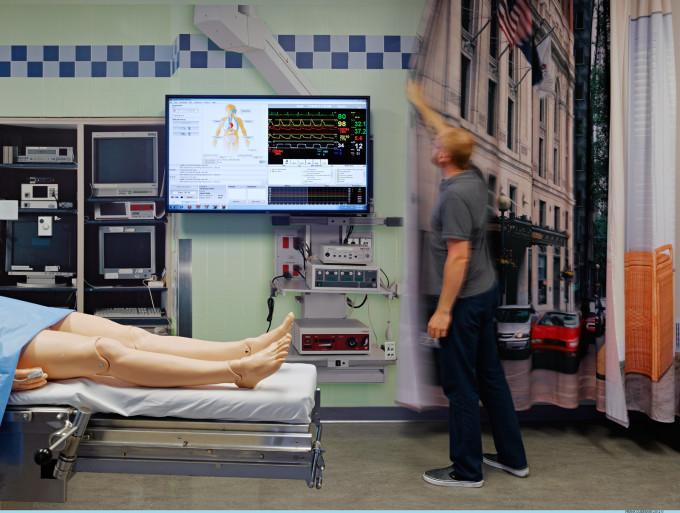
Get the latest articles delivered directly to your inbox!
Our Contributors
Class of 2022
Kyle Duke
Austin Foster
Charlotte Leblang
Ross Lordo
Class of 2021
Dory Askins
Connor Brunson
Keiko Cooley
Mason Jackson
Class of 2020
Megan Angermayer
Carrie Bailes
Leanne Brechtel
Hope Conrad
Alexis del Vecchio
Brantley Dick
Scott Farley
Irina Geiculescu
Alex Hartman
Zegilor Laney
Julia Moss
Josh Schammel
Raychel Simpson
Teodora Stoikov
Anna Tarasidis
Class of 2019
Michael Alexander
Caitlin Li
Ben Snyder
Class of 2018
Alyssa Adkins
Tee Griscom
Stephen Hudson
Eleasa Hulon
Hannah Kline
Andrew Lee
Noah Smith
Crystal Sosa
Jeremiah White
Jessica Williams
Class of 2017
Carly Atwood
Laura Cook
Ben DeMarco
Rachel Nelson
Megan Epperson
Rachel Heidt
Tori Seigler
Class of 2016
Shea Ray
Matt Eisenstat
Eric Fulmer
Geevan George
Maglin Halsey
Jennifer Reinovsky
Kyle Townsend
Join USCSOMG students on their journeys to becoming exceptional physician leaders.

Who’s in the Room?
Everyone who has spent significant time in the halls of Greenville Memorial knows this voice. It echoes monotonously through the halls, an Orwellian chant demanding the attention of the busy inhabitants. For medical students on the medicine or surgery call teams, ears perk up, pulses quicken and steps hasten. A steady and clear loop, it cuts through the hustle and bustle of the floor: “Code STAT, West Tower, 4F, Code STAT, West Tower, 4F….”
For the uninitiated, Code STAT indicates a patient in cardiopulmonary arrest (ie. their heart has stopped beating normally), and the need for lifesaving medical treatment, including CPR. For medical drama fans (it’s OK to admit you binge-watched those Grey’s Anatomy seasons), it’s often called “Code BLUE,” a familiar plot device that triggers a dramatic scene involving some frantic running, people shouting “clear” and the heroic slow motion revival of a patient from the brink of death. While codes are tense, emotional experiences, both on and off the screen the two tell very different stories. A Wall Street Journal article, “Why Doctors Die Differently1,” speaks to this gap:
“The case of CPR is instructive. A study by Susan Diem and others of how CPR is portrayed on TV found that it was successful in 75% of the cases and that 67% of the TV patients went home. In reality, a 2010 study of more than 95,000 cases of CPR found that only 8% of patients survived for more than one month.”
I was involved in a memorable Code STAT call during my recent internal medicine rotation. Our team strode quickly up to the room, turning the corner to see the family clustered in the hallway, in varying states of distress. One man stood apart from the circle, speaking into the room, eyes wide, his voice insistent and tinged with sorrow. “He has a living will, he wouldn’t want this,” he repeated over and over. Just inside the overcrowded room was a nurse. She stood with a syringe of epinephrine in hand, facing out towards the door, speaking emphatically but addressing no one in particular amidst the commotion. “He’s a full code in the chart; we have to do compressions,” she proclaimed repeatedly, pounding one gloved fist into the open palm of her other hand, each sentence popping with a synthetic certainty. During the back and forth, the respiratory therapist ensured a patent airway, and the upper level resident stepped to the foot of the code to lead the team, while the interns and I began chest compressions. The healthcare team moved efficiently and effectively, each member operating as they had been trained for such an emergency. Each person was doing their job in this effort to provide lifesaving care, yet the family huddled just outside the door were distraught–what had gone wrong? A few moments after our whirlwind arrival, an attending physician arrived and spoke with the family, and compressions were stopped.
The entirety of the exchange lasted just a few minutes, but it exposed an oft overlooked part of a patient’s experience in the healthcare system. Has anyone spoken with the patient about their wished for care at the end of life? Does the patient have an advanced directive or living will? A healthcare proxy? Does the family understand the patient’s wishes, and is the medical team (and the documentation) on the same page? Despite Medicare’s approval of patient physician conversations on end-of-life care, a recent Kaiser Family Foundation poll found that “fewer than one in five respondents reported actually having had such a discussion with a health care provider2.” Whether it’s with our family members during the holidays, or with our patients when they’re admitted to the hospital, these are imperative questions. It’s a conversation that can save family members from the stomach-wrenching anxiety and guilt of a Code STAT that triggers the “I never asked what she wanted…” realization. It’s a moment to offer hope to the patients in the midst of a time often imbued with fear and uncertainty. We owe it to our patients to do the work of discovering who they want in the room when that calm, clear voice reverberates through the halls, or if we should hear it at all.
1 http://www.wsj.com/articles/SB10001424052970203918304577243321242833962
I grew up in the small Pee Dee town of Marion, South Carolina, before heading up to Durham, North Carolina, for an undergraduate education (and a few basketball games) at Duke University. After a year working in community health at Duke, I was primed to begin the study of medicine. USC School of Medicine Greenville’s attention to communities and commitment to teamwork brought me back to South Carolina (the amazing facilities didn’t hurt either). I’m interested in primary care and thinking about how physicians’ moral frameworks affect their practice of medicine. Most of all, I’m excited to be part of this new school and look forward to reflecting together with my classmates as we make our way through these formative years.
Transforming Medical School Blog
Copyright 2021 USC School of Medicine Greenville


